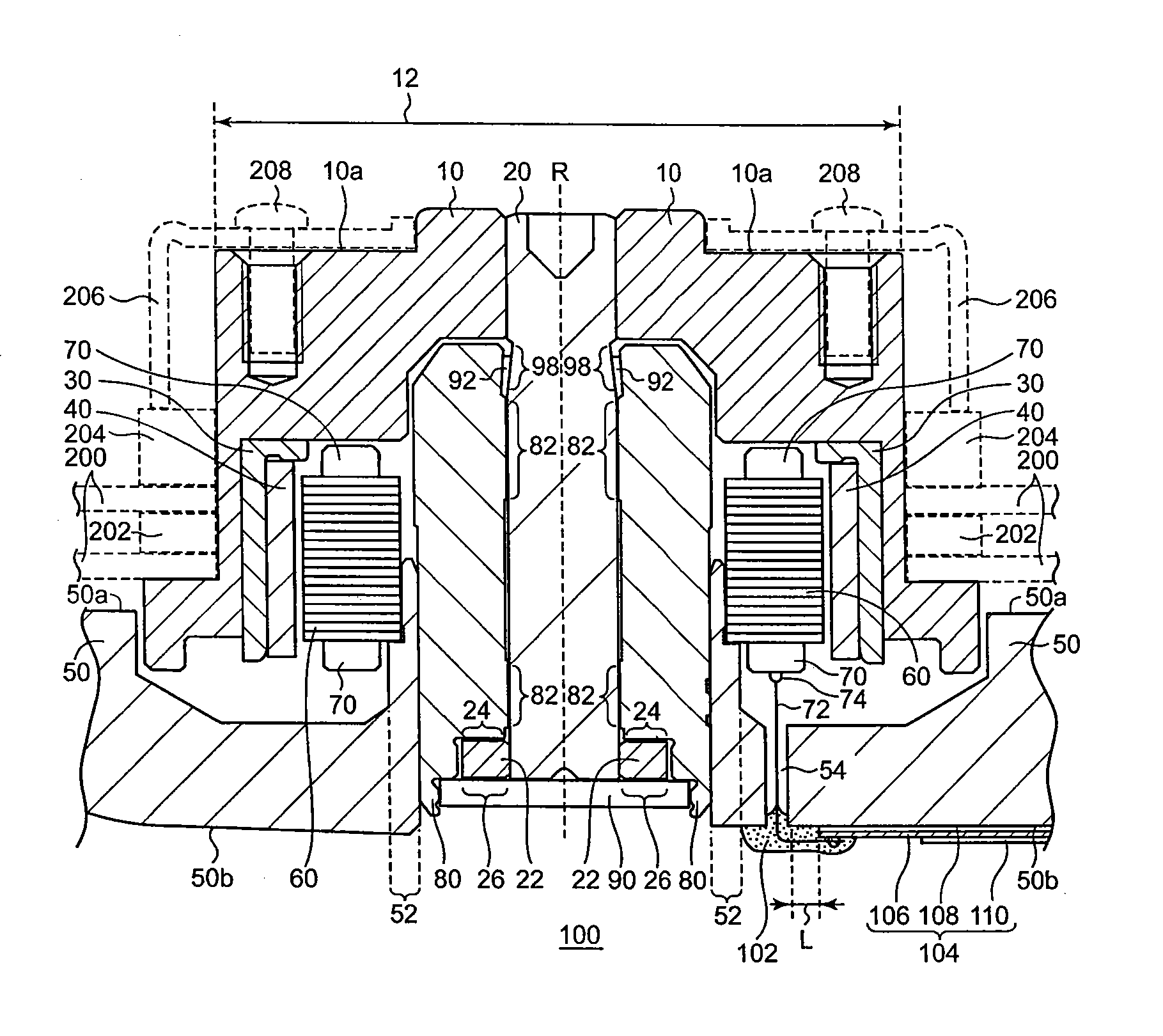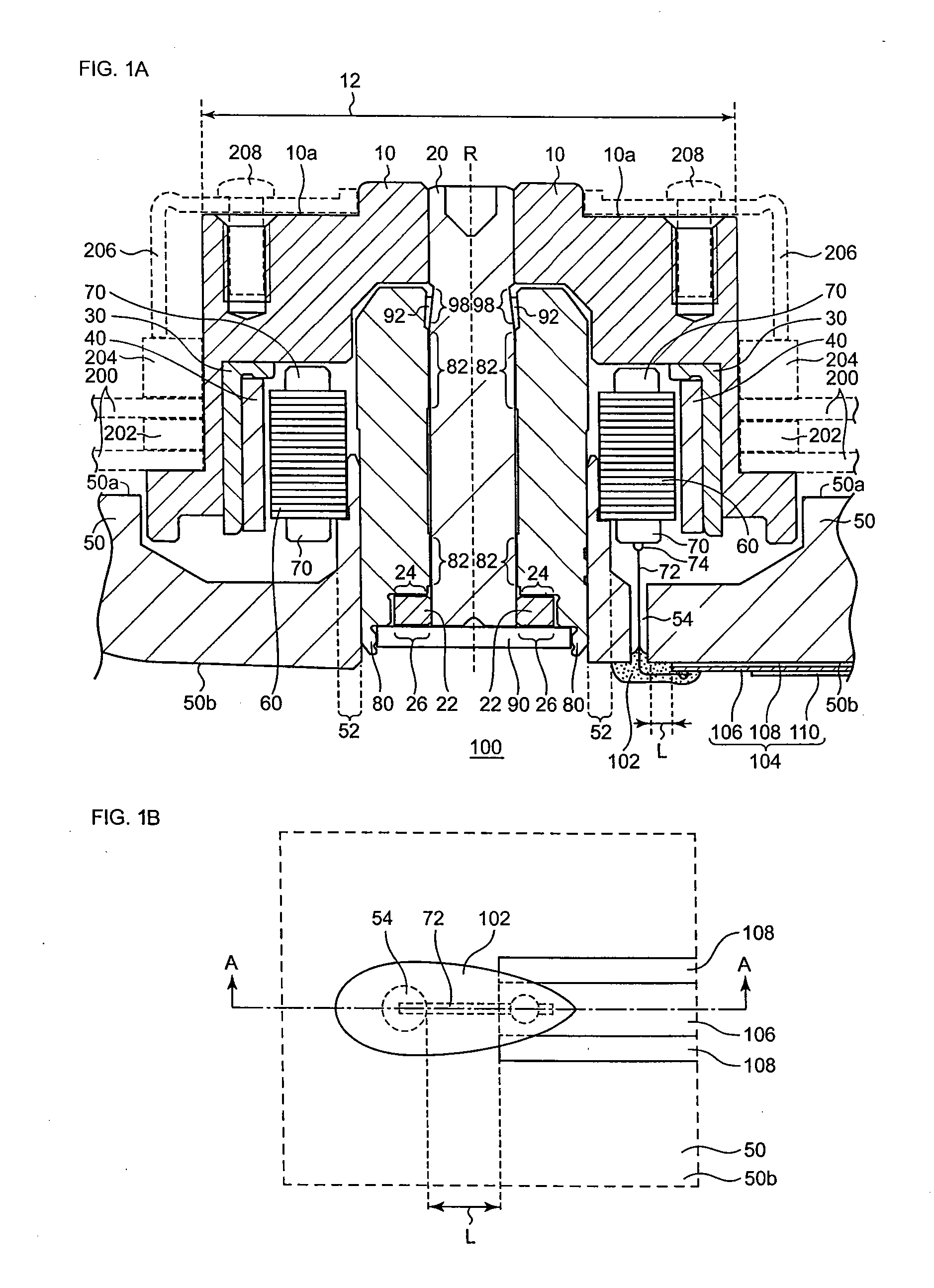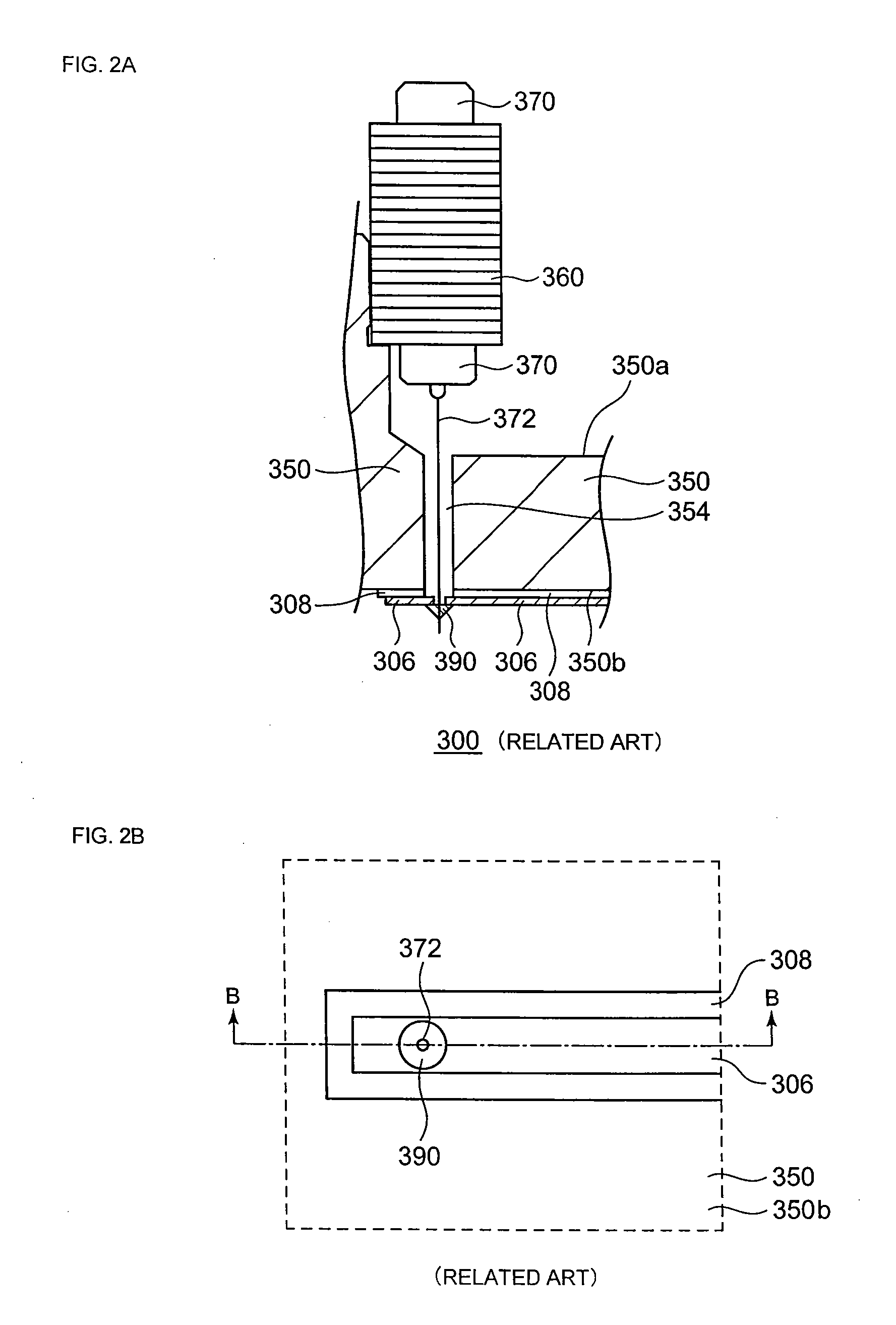Disk drive device for rotating a disk
- Summary
- Abstract
- Description
- Claims
- Application Information
AI Technical Summary
Benefits of technology
Problems solved by technology
Method used
Image
Examples
first embodiment
The First Embodiment
[0031]In the brushless motor 100 according to the first embodiment of the present invention, a wire 72 of one end of a coil 70 is drawn out to a bottom surface 50b of a base plate 50 through a hole 54 arranged on the base plate 50. The wire 72 of said end of the coil 70 is connected to a driving line or driving wiring 106 at a position other than the position of or on or above the hole 54. Further, in the brushless motor 100, the hole 54 is plugged with a resin 102 in order to keep it airtight. As a result, electrically connecting the driving line 106 and the wire 72 can be performed independently from sealing the hole 54 of the base plate 50, thereby the reliability of each act can be increased.
[0032]FIG. 1A is a cross-sectional view of the brushless motor 100 according to the first embodiment of the present invention. FIG. 1B is a partial bottom view of the brushless motor 100 according to the first embodiment of the present invention. FIG. 1B is a bottom view ...
second embodiment
The Second Embodiment
[0064]The main difference between the brushless motor 400 according to the second embodiment and the brushless motor 100 according to the first embodiment resides in the shape of the insulation film.
[0065]FIG. 3A is a partial cross-sectional view of the brushless motor 400 according to the second embodiment. FIG. 3B is a partial bottom view of the brushless motor 400 according to the second embodiment. FIG. 3A is a partial cross-sectional view of the brushless motor 400 near the hole 54 arranged on the base plate 50. FIG. 3B is a bottom view near the hole 54 of the base plate 50. FIG. 3A is the view that is sectioned along the line C-C, as illustrated in FIG. 3B.
[0066]The description will be omitted with regard to the portion(s) of the brushless motor 400 that is / are not shown in FIG. 3A or FIG. 3B since the portion(s) has / have a structure similar to that / those of the brushless motor 100 according to the first embodiment of the present invention.
[0067]The insula...
third embodiment
The Third Embodiment
[0072]The main difference between the brushless motor 500 according to the third embodiment and the brushless motor 100 according to the first embodiment resides in the shape of the insulation film.
[0073]FIG. 4A is a partial cross-sectional view of the brushless motor 500 according to the third embodiment. FIG. 4B is a partial bottom view of the brushless motor 500 according to the third embodiment. FIG. 4A is a partial cross-sectional view of the brushless motor 500 near the hole 54 arranged on the base plate 50. FIG. 4B is a bottom view near the hole 54 of the base plate 50. FIG. 4A is the view that is sectioned along the line D-D, as illustrated in FIG. 4B.
[0074]The description will be omitted with regard to the portion(s) of the brushless motor 500 that is / are not shown in FIG. 4A or FIG. 4B since the portion(s) has / have a structure similar to that / those of the brushless motor 100 according to the first embodiment of the present invention.
[0075]With regard to...
PUM
 Login to View More
Login to View More Abstract
Description
Claims
Application Information
 Login to View More
Login to View More - R&D
- Intellectual Property
- Life Sciences
- Materials
- Tech Scout
- Unparalleled Data Quality
- Higher Quality Content
- 60% Fewer Hallucinations
Browse by: Latest US Patents, China's latest patents, Technical Efficacy Thesaurus, Application Domain, Technology Topic, Popular Technical Reports.
© 2025 PatSnap. All rights reserved.Legal|Privacy policy|Modern Slavery Act Transparency Statement|Sitemap|About US| Contact US: help@patsnap.com



